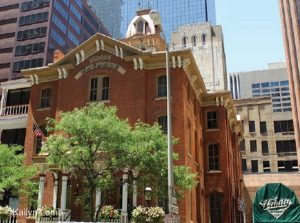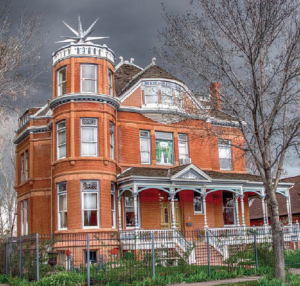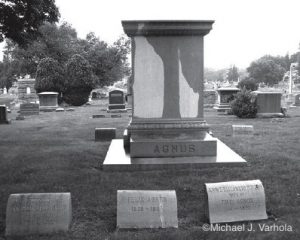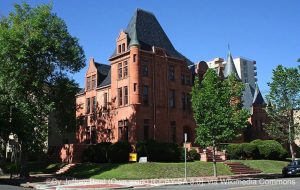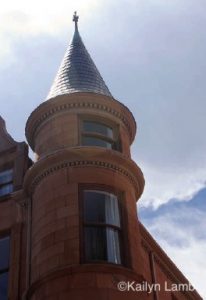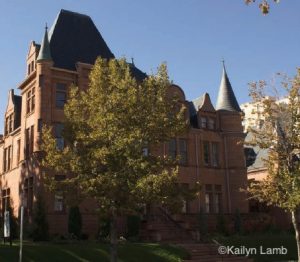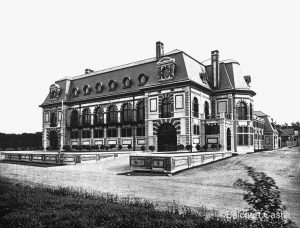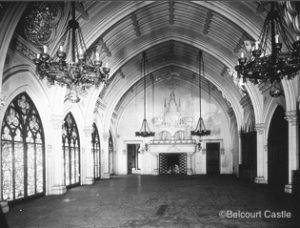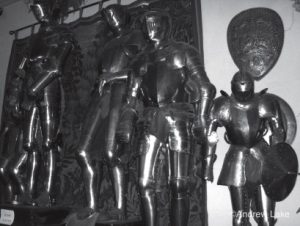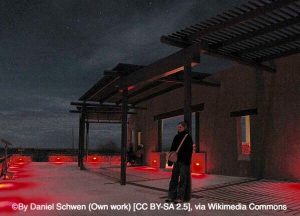Helen Pattskyn shares with us the story of Seul Choix Lighthouse which she describes as one of the scariest places on earth.
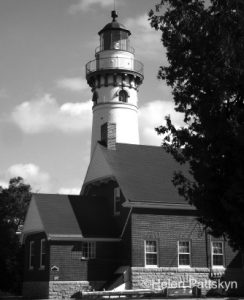 Although I’ve lived all my life in a state where more than 100 lighthouses dot the coastline, I had never actually visited one before venturing to Seul Choix Point, my first stop in the Upper Peninsula. I wasn’t sure what to expect when I got there. The Point’s 100-year-old lighthouse is reportedly one of the most haunted places in Michigan and was even featured on an episode of Fox Family’s Scariest Places on Earth. Even coming straight from spending a relatively quiet night alone at the haunted Blue Pelican Inn, I was feeling some trepidation as I approached my next destination. The battered blue sign telling me that Seul Choix’s historic lighthouse lay only 2 miles ahead did little to allay the feeling—neither did the slow drive up an old dirt road.
Although I’ve lived all my life in a state where more than 100 lighthouses dot the coastline, I had never actually visited one before venturing to Seul Choix Point, my first stop in the Upper Peninsula. I wasn’t sure what to expect when I got there. The Point’s 100-year-old lighthouse is reportedly one of the most haunted places in Michigan and was even featured on an episode of Fox Family’s Scariest Places on Earth. Even coming straight from spending a relatively quiet night alone at the haunted Blue Pelican Inn, I was feeling some trepidation as I approached my next destination. The battered blue sign telling me that Seul Choix’s historic lighthouse lay only 2 miles ahead did little to allay the feeling—neither did the slow drive up an old dirt road.
Seul Choix Point is a narrow, rocky stretch of land that juts out from Lake Michigan’s northern shore into Seul Choix Bay, about a two-hour drive east of St. Ignace. The bay received its name, which means “only choice,” in the 1800s when a group of French fur traders took shelter there during a violent storm that threatened to capsize their small vessel. The bay was their “only choice” for safe refuge along the dangerous stretch of coast, which is known for its rocky shoreline and high waves.
Those same waves make Seul Choix Bay a popular destination for surfers. I found a group of young men out enjoying the waves and warm early autumn weather the day I visited the Point, and I took a few minutes to talk to them. They didn’t know anything about any ghosts at the lighthouse; they were just out to get in a few more days of lake surfing before the weather turned cold.
The Michigan State Congress commissioned the Seul Choix Point Lighthouse in 1886, but it took six years for it to become operational—I think sometimes we forget how much work went into building construction a century ago. The entire complex, which consists of the 79-foot light tower, family quarters, a steam fog signal and boiler house, stable, and a number of other buildings, wasn’t completed until 1895. Additional living quarters were added in 1925. Back then, the Seul Choix Lighthouse was the only guiding light for ships along a 100-mile stretch of treacherous coastline. The nearest towns are Gulliver—whose Historical Society, in cooperation with the Department of Natural Resources (DNR), oversees the upkeep of the lighthouse—and Manistique, a popular destination for boaters, campers, and hikers.
I arrived at the end of the long dirt road to find a well-kept yard, brown brick house, and classic white light tower. Maybe it was the sunny weather, but I didn’t feel as if I’d just pulled up in front of one of the “scariest places on earth.” Wondering what I was really going to find, I headed over to the gift shop. Rather than asking about ghosts, my first question was, “How do you pronounce the name of this place?”
The young lady behind the counter laughed. It’s a question she gets a lot. “The easiest way I know to pronounce it is Sis-shaw,” she told me. After getting that cleared up, I explained that I was writing a book about haunted places in Michigan and wondered if she’d ever seen or heard anything unusual in the lighthouse. “Not personally,” she said. Although several guests and other staff members told her they’d heard music, “like an old phonograph recording,” playing in the lighthouse. She said that some people also report that electronic devices, like the digital camera I was carrying, stop working. “The batteries just die for no reason,” she said.
I definitely hoped that wouldn’t become a problem. Of course, I always carry extra batteries, just in case.
“If you really want some good stories, it’s my mom you should talk to,” she went on. “You can find her over at the lightkeeper’s quarters.”
I thanked her for her time and headed on over. The first thing that struck me when I walked into the house was how small the front parlor was. Yet at times in the lighthouse’s history, not only did the lightkeeper and his family live there, but his assistant and his family resided in the small dwelling too. That’s four adults and as many as six children. The lightkeeper’s home has been fully restored and is decorated with beautiful antique furniture—and seems about as far from scary as I could imagine a place to be.
I quickly found Linda, the volunteer I was seeking, sitting in what had probably been a formal dining room. She looked up from her book and greeted me with a warm smile. As soon as I explained the reason for my visit, Linda invited me to have a seat with her so she could tell me about Captain Joseph Willie Townsend, the lighthouse’s primary ghostly resident. She described him as a bit of a prankster, but not a ghost she or any of the other staff had ever been afraid of.
“He was originally from Bristol, England,” she said. “Captain Townsend lived here from 1901 until he died of consumption in one of the upstairs bedrooms in 1910.” Consumption is an old-fashioned term for tuberculosis. “Because he died in winter when the ground was too frozen to dig a grave, the Captain couldn’t be buried straightaway, and his body had to be stored in the basement for several months.” Some of the paranormal investigators who have visited Seul Choix believe that might be why the captain’s spirit remains “trapped” at the lighthouse.
Linda had her own ideas. She told me that the hauntings didn’t really start until a couple of original pieces of furniture were brought up from storage, when the lighthouse was last restored in the 1990s. One of the pieces in question is the kitchen table.
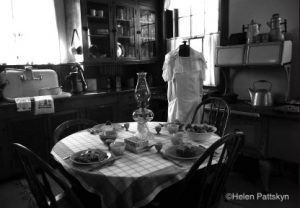 “In England,” Linda went on, “you set a table correctly by putting the knife and spoon on the left and the forks on the right.” That’s the opposite of the way we set a table here in the United States. “The Captain doesn’t seem to like it when we set the table American style. We always find the silverware reversed, even though no one’s been in the kitchen!” She laughed.
“In England,” Linda went on, “you set a table correctly by putting the knife and spoon on the left and the forks on the right.” That’s the opposite of the way we set a table here in the United States. “The Captain doesn’t seem to like it when we set the table American style. We always find the silverware reversed, even though no one’s been in the kitchen!” She laughed.
Like the other rooms, the kitchen is roped off so that visitors can look but not touch.
Numerous guests and most of the staff have smelled cigar smoke throughout the living quarters, even though no smoking is allowed in the building, and often there isn’t anyone else around. Linda told me that, despite his health problems, Captain Townsend was a heavy cigar smoker, and it seems that, even in death, he enjoys a good cigar.
In the mornings several volunteers have found a “crescent-shaped imprint” on the bedspread in the room they’re pretty sure was the Captain’s. “It looks like someone sat down right on the bed,” Linda said. Some volunteers and visitors have reported seeing a man watching them from one of the windows, about halfway up the light tower—but no one was in the tower at the time.
Probably the eeriest of Linda’s stories was one a guest told her. A woman was visiting the lighthouse sometime last year, and when she pulled in, she noticed a man wearing a heavy blue coat, walking across the yard to the lighthouse. Being friendly, she waved; he ignored her, but she didn’t think that much of it. Like me, she went to the gift shop first, then went over to the lighthouse, looked around, and headed on her way. When she got home, the woman started doing some research on the lighthouse’s history and realized that the man she’d seen in the yard was Captain Townsend! She contacted the lighthouse staff to tell them of her unusual encounter.
“Several people have seen a man wandering the grounds before,” Linda told me, “but this was the first time someone positively identified the Captain, even though they didn’t know who it was at the time.”
I have to admit, hearing that gave me goose bumps!
 In addition to Captain Townsend roaming the grounds, rearranging silverware, and ignoring no-smoking signs, volunteers have also found toys strewn all over the floor of the “children’s bedroom” upstairs. Nothing had been out of place the night before, and, by all accounts, the lightkeeper’s quarters had been locked up all night. Linda told me that she thinks the children’s room might be haunted by the spirits of two of the little girls who grew up in the lighthouse. Although they grew up and moved away, both had recently passed on—and it was just about the time they died that the children’s room became “active.”
In addition to Captain Townsend roaming the grounds, rearranging silverware, and ignoring no-smoking signs, volunteers have also found toys strewn all over the floor of the “children’s bedroom” upstairs. Nothing had been out of place the night before, and, by all accounts, the lightkeeper’s quarters had been locked up all night. Linda told me that she thinks the children’s room might be haunted by the spirits of two of the little girls who grew up in the lighthouse. Although they grew up and moved away, both had recently passed on—and it was just about the time they died that the children’s room became “active.”
I thanked Linda for her time and went to have a look around for myself. Even though I had been told that a number of guests reported feeling the Captain’s presence on the staircase, I didn’t feel anything unusual. My camera continued to work too. I didn’t smell cigar smoke or hear music. Even so, I appreciate antique furniture, so I enjoyed walking around the small house. And I appreciated the staff’s sense of humor when I found the plastic Halloween skeleton hanging in an upstairs bedroom closet! I admit that it got me. I jumped.
When I came back downstairs, Linda let me step into the living room, which is normally roped off, so I could get a better picture of the antique organ, where the portraits of past lightkeepers are on display. She also invited me to climb the tower.
The lighthouse at Seul Choix is a working light station and one of the few where visitors are allowed to climb the tower. Of course, no one lives in the lightkeeper’s quarters today; the station is automated. A hundred years ago, however, the light was fueled by oil, which had to be carried by hand up to the light at the top of the 79-foot tower. Every two hours, the lightkeeper or his assistant hauled two heavy metal buckets up a very narrow spiral staircase.
Because I’d never been to a lighthouse before, I decided to go ahead and make the climb—despite my horrible fear of heights. As I climbed the narrow metal stairs, I marveled at how a man twice my size had made the same trip four or five times a night, carrying heavy buckets filled with oil. I stopped at the midway point to catch my breath and enjoy the view from one of the windows—and got the distinct feeling that I was being watched. But no one else was in the tower with me. Of course, it might have been my imagination; I’d spent the last 40 minutes listening to ghost stories. Although my nerves threatened to get the better of me (because of the height, not the ghosts), I made it to the top. The view of the lake was spectacular. That alone made the drive worthwhile.
The tower and lightkeeper’s quarters are open to visitors from Memorial Day through mid-October. Guests are asked to make a small donation that goes to the Gulliver Historical Society to keep the lighthouse running. In addition to the lighthouse and gift shop, Seul Choix Point has a beautiful public beach, where I stopped to enjoy my lunch and take more pictures before getting back on the road toward Marquette and the Landmark Inn.
In Ghosthunting Michigan, Helen Pattskyn takes readers along as she explores some of her home state’s most haunted locations. Get your copy here.
Photo credits
All black and white photos: Helen Pattskyn
All color photos: Carol M. Highsmith [Public domain], via Wikimedia Commons
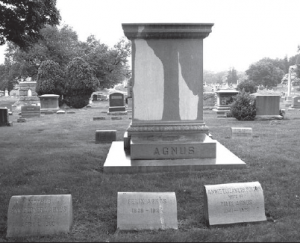 The base of this statue is fitted with a plaque dedicating it to Theodore Marburg Jr., which mentions his service with the British Royal Flying Corps during World War I and includes some rather strange verbiage about the need for an American presence in Europe. It also indicates that Theodore was born in 1893 and died in 1922, begging the question of how he might have died not during the war but a mere four years after it ended.
The base of this statue is fitted with a plaque dedicating it to Theodore Marburg Jr., which mentions his service with the British Royal Flying Corps during World War I and includes some rather strange verbiage about the need for an American presence in Europe. It also indicates that Theodore was born in 1893 and died in 1922, begging the question of how he might have died not during the war but a mere four years after it ended.